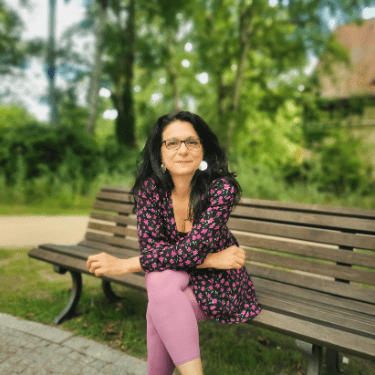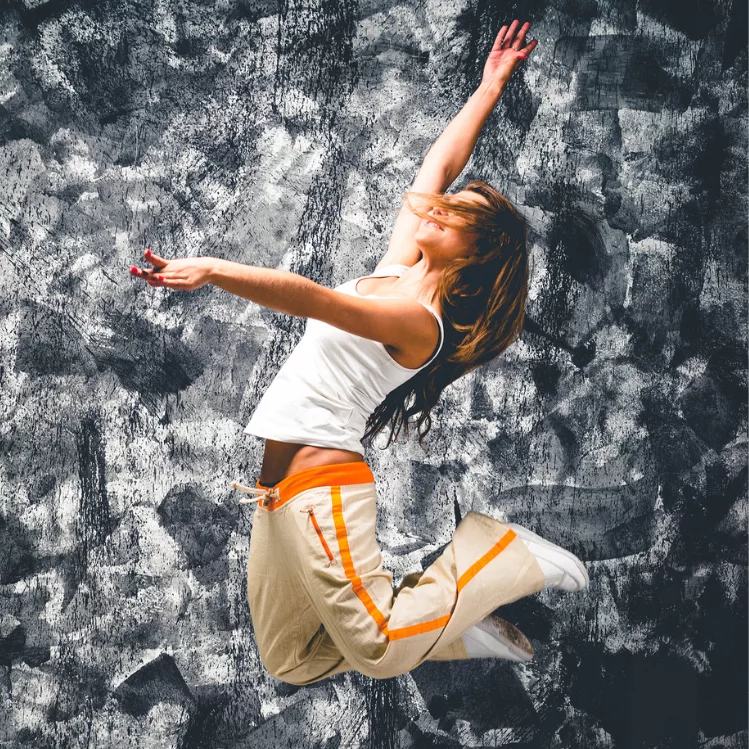
Behind the Lens: Odeta’s Passion for People and Photography
Odeta Catana is a Berlin-based photographer with over 11 years of experience, driven by a deep passion for capturing life’s authentic moments. Her curiosity and love for imagery fuel her diverse photographic style, allowing her to anticipate and preserve everything from grand atmospheres to the smallest gestures. Each project she undertakes is a new challenge, enriching her artistic approach and pushing the boundaries of her creativity. Known for her ability to meet tight deadlines, Odeta’s unique superpower lies in making even the most camera-shy individuals feel like Hollywood stars. For her, photography is more than a profession—it’s a gateway to new experiences, connecting her with people and events she might never have encountered otherwise. As a documentary photographer, she prides herself on being a discreet observer, capturing portraits and memorable moments without disrupting the natural flow of life. Odeta’s work is a testament to her ability to see the extraordinary in the everyday, transforming ordinary scenes into timeless visual stories.
Can you share a moment in your particularly transformative photography career? How did it influence your approach to documentary photography?
One particularly transformative moment in my photography career occurred during a project in Berlin titled Guilty Pleasure. During this project, I met an acquaintance who shared with me that he enjoyed wearing women’s clothing but didn’t have any with him at the moment. Without hesitation, I spontaneously offered him my clothes—a short skirt and blouse—which he gladly accepted. The resulting photographs captured him in my attire, and every time I revisit those images, I am transported back to that moment of spontaneity and shared vulnerability. This experience reinforced the importance of staying open to the unexpected and embracing moments of connection and authenticity, both in my personal life and in my approach to documentary photography. It reminded me that the most meaningful images often arise from genuine human interactions and a willingness to step outside of our comfort zone. This specific picture makes me smile every single time.
Your work spans various subjects, from migration to social phenomena. How do you choose the topics you document, and what draws you to these particular stories?
My projects often stem from personal experiences, emotions, and struggles that resonate deeply with me. For instance, my concerns about my sister living abroad for years and the sense of loss I felt as she left inspired the project Mother Romania, which explores the migration generation. Similarly, my curiosity about what people keep hidden behind closed doors led to the creation of Guilty Pleasure in Berlin. This project began with a self-portrait, where I explored my guilty pleasure before capturing others. Each project starts from a place of personal reflection, allowing me to connect deeply with the stories I document.
You mentioned that photography opens doors to new lives and events. Can you tell us about a time when photography led you to an unexpected experience or connection?

Photography has a unique way of connecting me with people and experiences I never would have encountered otherwise. For example, I’ve photographed events where the organizers, who were initially just professional contacts, have become some of my closest friends over the years. I never expected such lasting relationships to develop from what began as a simple one-hour assignment. Additionally, documenting conferences has allowed me to learn from speakers in fields like addictions or leadership skills—knowledge I might never have gained without photography. These experiences remind me of how photography continuously opens doors to new opportunities and enriches my life in unexpected ways.
You’ve worked on documenting the lives of Roma communities in Berlin. What challenges did you face in capturing their stories, and how did you ensure your work remained authentic and respectful?
If you approach people with genuine respect and give them the freedom to say ‘no’ when you wish to photograph them, you can connect with anyone—whether Roma, Germans, or anyone else. I believe in being both empathetic and respectful, which is the approach I always strive to take. During this particular project, I captured some wonderful portraits of Roma individuals. However, due to the stigma they face, several of them later asked me to remove their photos from the project. I ultimately decided to delete the entire project from my website because, without those key portraits, it felt incomplete. Reflecting on this experience, I realized that, while I was still proud of the visual results, the desires and dignity of the people I photograph are far more important to me than the work itself.
In your project “A Country of Grandmas,” you blended photography with performance art. How did this experience differ from your usual documentary work, and what impact did it have on you as an artist?
The performance featured well-known and emerging Latvian actors sharing stories from their childhoods, all of whom were raised by their grandmothers. I visited and photographed these grandmothers—or, in cases where they had passed, their homes. My documentary photographs were displayed as the audience exited the performance, serving as a natural extension of the show by giving faces to the stories being told. This project resonated with me as I was also raised by my grandparents, making me particularly sensitive to the experiences of elderly people, with or without a camera in my hands. Unlike a traditional photography exhibition, this project had a much deeper narrative connection, which seemed to impact the audience on a different level. I was thrilled to witness those ‘aha’ moments as people connected the visual portraits with the small stories they had just heard, making the experience even more meaningful.
You’ve been living and working in Berlin for 11 years. How has the city influenced your artistic vision and the way you approach your photography projects?
Berlin’s spirit of freedom has subtly but profoundly shaped my artistic vision. This sense of liberation is what initially drew me to the city and continues to inspire me today. Living here has taught me to approach my projects without limitations or preconceived notions, embracing creativity without barriers. Even with assignments, I explore every angle, variation, and possibility, allowing myself the freedom to experiment. This open-minded approach not only enriches my work but also ensures that I achieve the best possible results by fully exploring all creative avenues.
As a photographer who captures candid moments, how do you balance being a discreet observer with the need to create compelling images that tell a story?
Balancing discretion with the creation of compelling images is indeed a delicate art. My approach is to remain as unobtrusive as possible, allowing moments to naturally unfold without my presence or camera altering the scene. I aim to capture authentic moments that genuinely tell the story. I often see the world and everyday life as a sequence of photos, and sometimes I can anticipate people’s actions and situations before they happen. This allows me to position myself in advance, choosing angles that I know will yield the most impactful image, one that resonates deeply with the viewer. This ability to foresee the perfect shot helps me maintain the balance between being a discreet observer and effectively capturing the essence of the scene.
You have a strong academic background in history, theory of arts, and cultural anthropology. How do these disciplines inform your photography, and do they influence the way you frame your subjects?
My academic journey has been essential in shaping my path to photography and the way I approach it today. My studies in History and Theory of Arts have deeply influenced how I work with visual elements like color, framing, and composition. Cultural anthropology, on the other hand, has transformed the way I observe and interact with the world, providing me with a deeper understanding of the human experience. Each discipline has enriched my perspective, influencing how I frame my subjects and tell their stories. Photography, in turn, has also transformed me, making me more open, free, and expansive compared to who I was 13 years ago.
Your work often involves connecting deeply with your subjects. How do you build trust with them, especially when documenting sensitive or personal topics?
I build trust with my subjects through empathy and honesty. When I notice someone is camera-shy, I start by sharing that I am, in fact, extremely camera-shy myself, which is true. This helps to create a connection and put them at ease. I bring my humor into every photo session, using a small joke to lighten the atmosphere from the very beginning. I also make an effort to open up and share a bit about myself, shifting the focus to me so that they feel comfortable doing the same. This mirroring approach usually helps people become less intimidated by the camera and more relaxed in my presence, even though I’m initially a stranger to them.
Interestingly, it’s often in the last minutes of a session that the most authentic and honest photos emerge. As people get tired and their layers drop, they’re less guarded and more themselves—almost as if they’re waiting for me to put the camera away. Ironically, I sometimes feel like the first 45 minutes of shooting are just a warm-up, and it’s in those final five minutes that the true ‘diamond’ of each person is revealed.
How has your documentary approach to photography shaped the way you capture both intimate moments and the overall atmosphere at events, ensuring that your subjects feel natural and at ease?
My documentary approach to photography is rooted in simplicity and respect. I aim to create a comfortable environment by being kind, smiling often, and giving space when someone feels uncomfortable. Whether it’s a one-on-one shoot or a large event, I focus on authenticity and move discreetly to capture genuine moments. I pay close attention to details and angles, stepping forward only when necessary to get the perfect shot, and then blending back into the background. This approach helps my subjects feel at ease, allowing me to capture the true essence of the moment.
Can you share a memorable experience where your ability to make even the most camera-shy individuals feel like Hollywood stars significantly impacted the outcome of a portrait or event shoot?
A memorable experience that highlights my ability to make camera-shy individuals feel confident occurred during a portrait session with a particularly anxious client. I started by engaging her in casual conversation and sharing my own experiences of being self-conscious in front of the camera. As the session progressed, she began to relax, and soon she was laughing and enjoying the process. The final images captured her looking purely brilliant, natural and confident, which surprised and delighted her. This experience reaffirmed the importance of empathy and connection in helping people feel their best in front of the camera.
I believe that everyone can be photogenic; it’s just that some people struggle to relax and open up in front of the camera, often feeling stressed about how they will appear in the photos.
What advice would you give to emerging photographers who are interested in documentary photography but may feel intimidated by the challenges of capturing real-life stories?
My advice to emerging photographers is to embrace the challenges and view them as opportunities for growth. Documentary photography is about more than just capturing images; it’s about connecting with people and telling their stories with honesty and empathy. Start by focusing on subjects that resonate with you because your passion and authenticity will shine through in your work.
It’s crucial to recognize your initial limits, but equally important to challenge them. Don’t be afraid to step outside your comfort zone—some of the most powerful images are born from moments of vulnerability and spontaneity. Keep an open mind, be patient, and always treat your subjects with respect and dignity. These qualities will be reflected in the final photographs.
If you wish to see Odeta’s portfolio, you can visit her website at www.odetacatana.com.

APPLY TODAY
100 Top Global Women Entrepreneurs – Global Woman Magazine
Our Journey in 12 Months:
Our Journey in 12 Months – Global Woman Magazine
5 Things That Show Money is Not Evil:
5 Things to Show That Money Is Not Evil – Global Woman Magazine
Global Man Magazine Page:
Global Woman, Global Man: Socials:
Global Woman Magazine (@global_woman.magazine) • Instagram photos and videos






